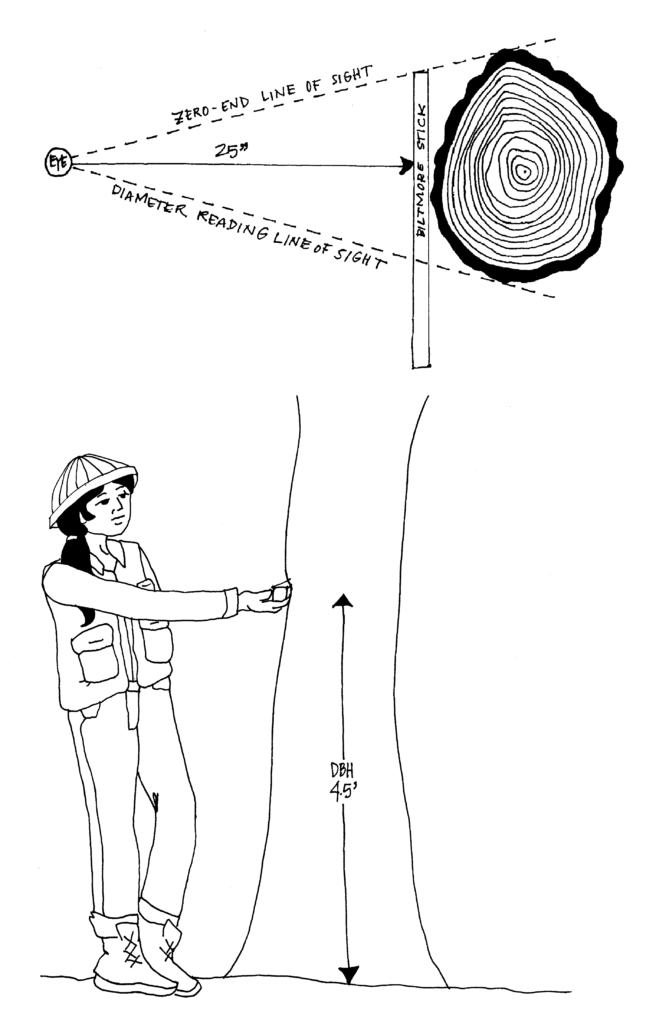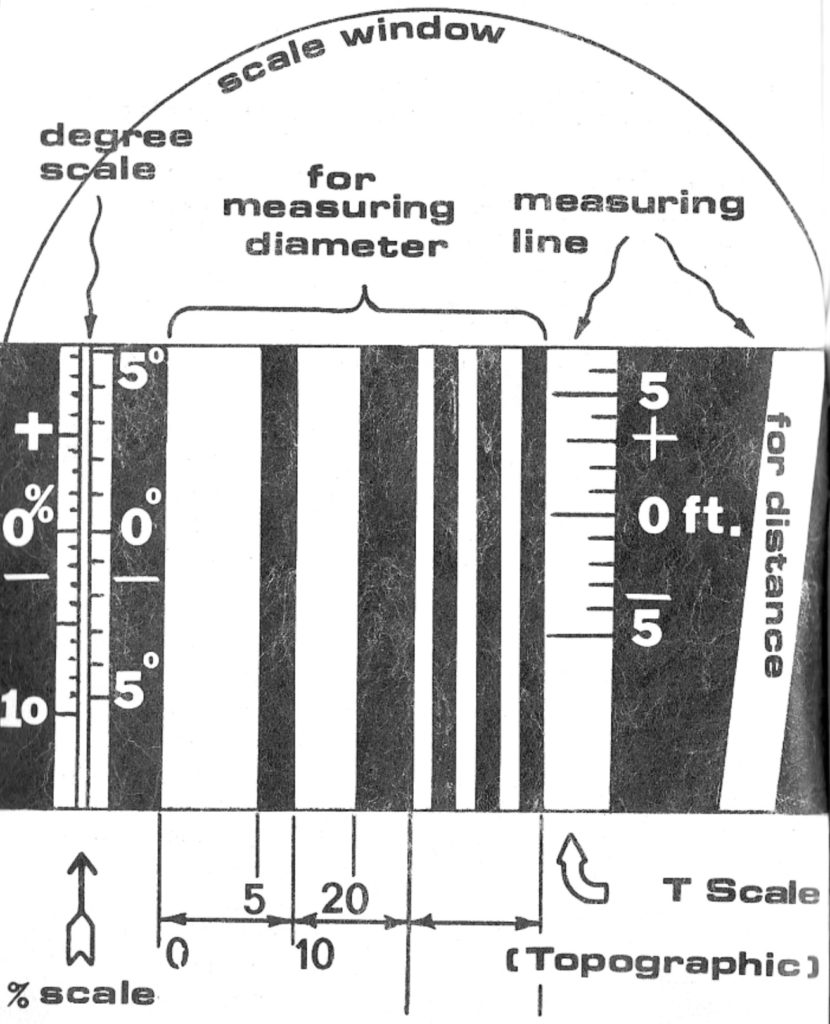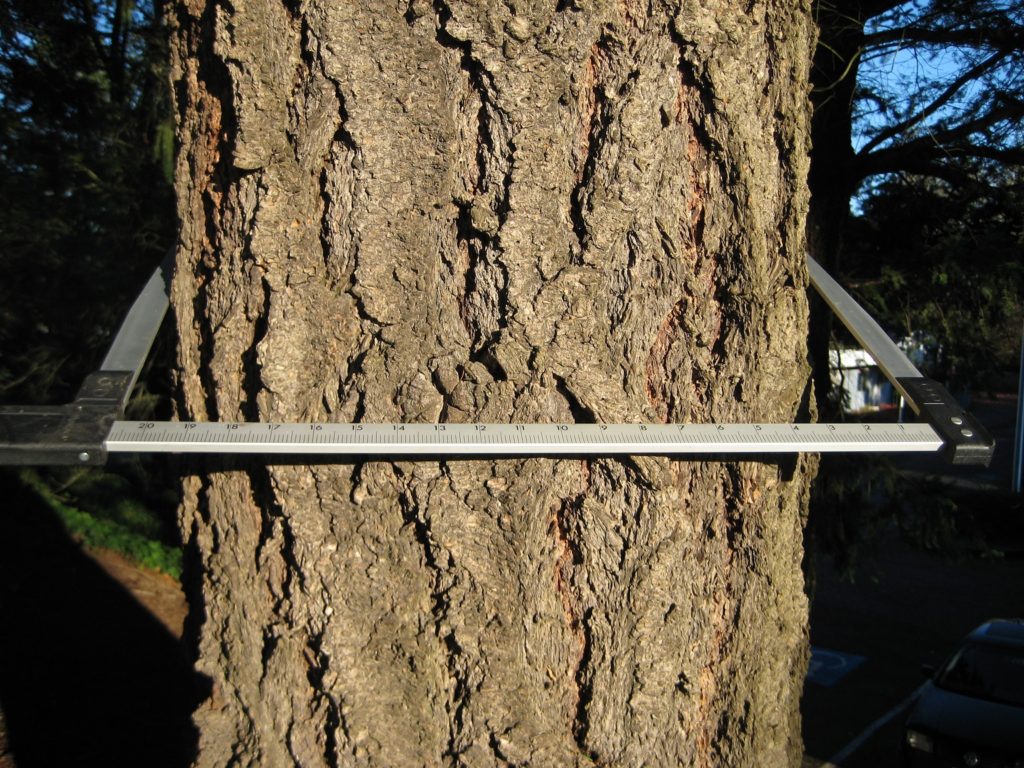3.3 Instruments for Measuring Tree Diameter
A number of different instruments can be used to determine DBH. Each has its merits and should be used according to the situation at hand.
1. A diameter tape, or d-tape, is the most common tool. The tape is wrapped around the tree, measuring its circumference. The tape is graduated to reflect a conversion from tree circumference to tree diameter. Thus, circumference is measured, but diameter can be recorded to the nearest 0.1 inch (Figure 3.11). Granted, most trees are not perfect circles, so there is some error in this method. However, except on extremely irregular trees, this method seems to “average out” the tree’s shape to an acceptable estimate.

2. A Biltmore stick can give quick estimates of DBH to the nearest 2 inches (Figure 3.12). The slanted edge of the stick is held against the tree 25 inches from a person’s eye. One end of the stick is lined up with the left edge of the tree. Without moving one’s head, the diameter is read off the stick where the line of sight crosses the stick on the right edge of the tree. In general, two measurements should be made on the tree, at right angles to each other, to account for the fact that trees are rarely perfectly symmetrical. The average of the two measures is recorded.

3. A relaskop can be used to determine diameter at any point in the tree. This makes it very useful for measuring merchantable tops, merchantable heights and taper heights in timber cruising. The diameter scales adjust for slope as one looks higher and higher in the tree (Figure 3.13). However, because it is slower and estimates DBH less precisely than a d-tape, this instrument is generally reserved for DBH measurements when you must measure DBH from a distance—either because you physically cannot get to the tree, or because the correct measurement point for DBH on the tree is out of reach.
.

4. An electronic dendrometer gives a digital readout of diameter at any point in the tree. It is essentially an electronic relaskop.
5. In areas where vines are prevalent, getting a d-tape around a tree or finding a flat side on which to lay a Biltmore stick can be nearly impossible. In these circumstances, a tree caliper is useful (Figure 3.14). A graduated scale corresponds to the width of the caliper teeth. Again, two measurements should be made, at right angles to each other, in order to alleviate error that would occur in trees that are rather elliptical. The average of the two measures is recorded. Tree calipers are somewhat heavy, and can be cumbersome to carry around all day, especially in heavy brush. Therefore, these are not as popular in the Pacific Northwest as they are in other regions.


